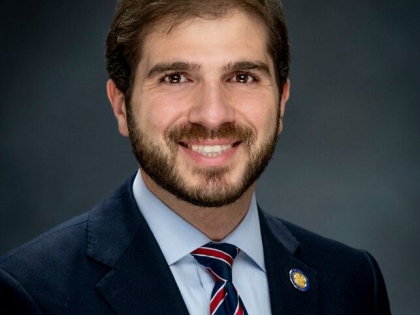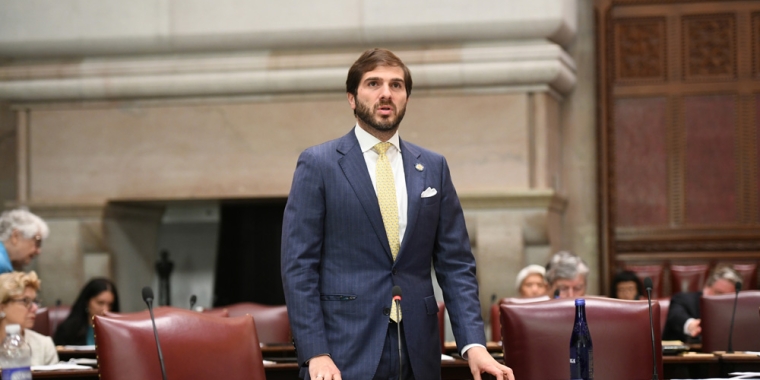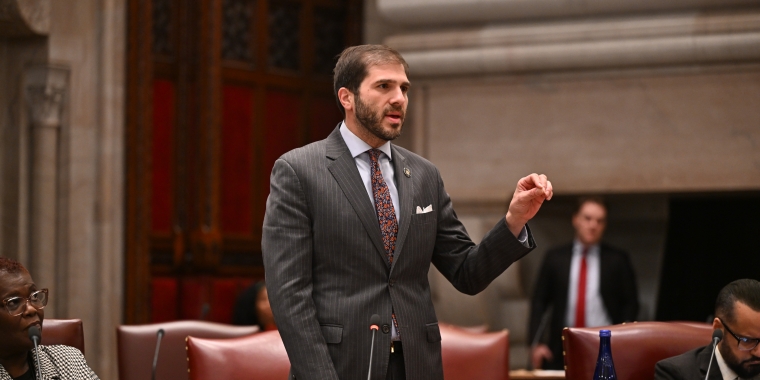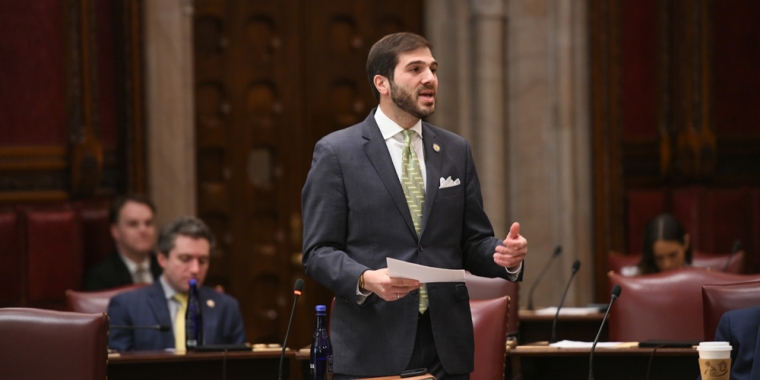
New Allegations of Cover-Up by Cuomo Over Nursing Home Virus Toll
ALBANY, N.Y. — Gov. Andrew M. Cuomo and his administration faced new allegations on Friday that they had covered up the scope of the coronavirus death toll in New York’s nursing homes, after a top aide to the governor admitted that the state had withheld data because it feared an investigation by the Trump Justice Department.
The remarks by the top aide, Melissa DeRosa, made in what was supposed to be a private conference call with Democratic lawmakers, came as a cascading series of news reports and a court order have left Mr. Cuomo, a third-term Democrat, scrambling to contain the political fallout over his oversight of nursing homes, where more than 13,000 people have died in the pandemic in the state.
Lawmakers from both parties have called for stripping the governor of the emergency powers that he has exercised during the pandemic, while Republicans have demanded the resignations of top Cuomo administration officials and new federal investigations.
Ms. DeRosa’s jarring admission came when she was asked about ongoing delays in giving lawmakers nursing home death data. She said that after the Department of Justice requested information last summer, “basically, we froze.”
At the time, the governor’s office was also facing similar requests from the State Legislature.
“We were in a position where we weren’t sure if what we were going to give to the Department of Justice, or what we give to you guys, and what we start saying, was going to be used against us and we weren’t sure if there was going to be an investigation,” Ms. DeRosa said during the call, according to a partial transcript later released by the governor’s office after her remarks appeared in The New York Post.
The Justice Department never formally opened an investigation, according to Ms. DeRosa. But the intense scrutiny of the governor’s record on nursing homes has struck at the core of his carefully cultivated image as a competent chief executive with a deference to facts, as embodied by the daily news conferences that he held early in the outbreak. Mr. Cuomo even published a memoir about his work on the pandemic before it ended, offering “leadership lessons.”
The continuing questions about how many people died in nursing homesresidents threatens to overshadow Mr. Cuomo’s legacy.
Just two weeks ago, the state’s attorney general, Letitia James, who has been an ally of the governor, in a damning report accused the Cuomo administration of undercounting coronavirus related deaths connected to nursing homes by the thousands.
Democrats both in the State Senate and Assembly met privately on Friday afternoon to discuss whether the Legislature should curtail the emergency powers that have allowed the governor to set virus-related restrictions and gave him full control over the vaccine rollout. No immediate action was expected.
“Crucial information should never be withheld from entities that are empowered to pursue oversight,” Andrea Stewart-Cousins, the Senate majority leader and a Democrat, said in a statement before the meeting, adding that she would discuss “next steps” with her conference.
Condemnation was even louder from Republicans, who seized on the remarks as evidence of duplicity or even criminality.
“It is time to move past the lies and finally uncover the full truth,” saidRepresentative Tom Reed, a Republican from the state’s Southern Tier, who called for a federal investigation on Thursday night.
Ahead of Friday’s meeting, about a third of the 43-member Democratic conference in the Senate signed a public letter in support of repealing the governor’s expanded powers “as expeditiously as possible.”
While the state has acknowledged that the pandemic tore through nursing homes last spring, Mr. Cuomo’s health department had refused to reveal how many nursing home residents had died after being hospitalized, saying such information was difficult to compile and verify, and was being carefully audited.
Mr. Cuomo has also repeatedly tried to blame the nursing home issue on former President Donald J. Trump and political partisanship, and has pushed back hard on allegations of a cover-up, simultaneously saying that his administration was committed to facts and suggesting — after some additional data was released — that statistics were beside the point.
“We’re below the national average in number of deaths in nursing homes, but who cares?” Mr. Cuomo said in late January, arguing that the percentages were unimportant. “Died in a hospital, died in a nursing home? They died.”
Mr. Cuomo, who was in Washington on Friday to meet with President Biden, has not commented on Ms. DeRosa’s remarks.
But other Democrats were voicing concern. State Senator Andrew Gounardes, a Democrat from Brooklyn, called the revelations “a betrayal of the public trust,” adding, “There needs to be full accountability for what happened, and the legislature needs to reconsider its broad grant of emergency powers to the governor.”
Early on Friday, Ms. DeRosa, the top nonelected official in the state, sought to clarify the context for her remarks. She described the administration’s delays in getting information to state lawmakers as a kind of triage, because it had needed to prioritize a response to federal authorities.
“I was explaining that when we received the D.O.J. inquiry, we needed to temporarily set aside the Legislature’s request to deal with the federal request first,” she said. “We informed the houses of this at the time,” referring to the upper and lower chambers of the Legislature.
She said that the administration was “comprehensive and transparent in our responses to the D.O.J., and then had to immediately focus our resources on the second wave and vaccine rollout.”
“As I said on a call with legislators, we could not fulfill their request as quickly as anyone would have liked,” she said.
Ms. James’s report forced the state’s health department to make public more than 3,800 previously unreported deaths of residents who died outside a facility, like in a hospital, and had not been included in the state’s official nursing home tally.
Since then, the number of deaths connected to New York nursing homes and long-term care facilities has only ballooned, to about 15,000 confirmed and presumed deaths, from 12,743 in late January, as of this week.
The administration released the latest figures in response to a court order after a six-month battle between the Cuomo administration and the Empire Center, a conservative-leaning think tank, which requested a full accounting of nursing home deaths under the state’s Freedom of Information Law.
The virtual meeting this week between Ms. DeRosa and other senior administration officials, including Mr. Cuomo’s health commissioner and budget director, and top Democratic state lawmakers was intended to bridge a growing rift between the governor’s office and the Legislature.
In hearings in early August, legislators repeatedly questioned the state health commissioner, Dr. Howard Zucker, on the full extent of deaths linked to nursing homes. They were unsatisfied with Mr. Zucker’s failure to disclose the number of resident deaths outside nursing homes and long-term care facilities.
“I’m not prepared to give you a specific number,” Dr. Zucker told state lawmakersat the time. “We are looking at all the numbers, we are looking at the data, when the data comes in and I have an opportunity to piece through that, then I will be happy to provide that data to you and to the other members of the committee.”
A few weeks later, on Aug. 20, the State Senate and Assembly formally wrote to the health department requesting those figures, as well as additional information.
Then on Aug. 26, the Justice Department requested nursing home data from four states, including New York, to determine whether it would launch a formal investigation into those states’ handling of deaths in nursing homes.
Cuomo officials said that as a result, they asked legislative leaders for additional time to respond to their data request as they addressed the federal inquiry.
The administration responded to the Justice Department’s questions in writing relatively quickly, by Sept. 9. But state health officials did not respond to the Legislature’s questions until this week, nearly six months later.
In Wednesday’s meeting, Ms. DeRosa told Democratic lawmakers that Mr. Trump had turned nursing homes “into a giant political football,” conceding that the state’s lack of transparency may have complicated some lawmakers’ re-election campaigns.
And she noted that the data that the state was receiving from nursing homes was often muddled and required strenuous work to clean up.
“I’m just asking for a little bit of appreciation of the context,” Ms. de Rosa said, apologizing and promising better data in the future. “I do understand the position that you were put in. I know that it is not fair.”
But lawmakers seemed unconvinced.
“We don’t have enough time today to explain,” Assemblyman Richard N. Gottfried, the Democratic chairman of the health committee, “all the reasons I don’t give that any credit at all.”



